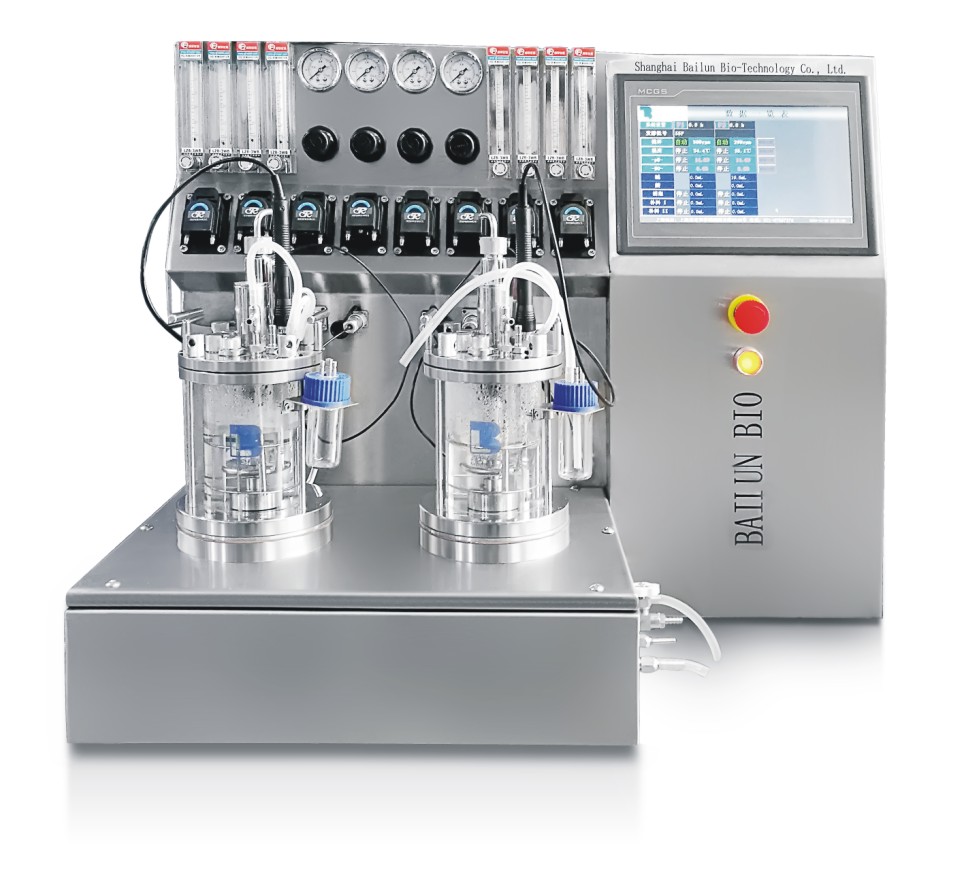
工业微生物学和生物技术领域最重要的技术进步之一是生物反应器的发明。为什么?它们使我们能够制造出疫苗、激素和酶等重要的医疗产品,其中一些产品可以治疗严重的慢性病。这些坚实而深厚的系统是医学领域进步的基础。
Knowledge about fermenter is, therefore, essential to contemporary science and technology, irrespective of the choice of an individual profession.
本文讨论了各种生物反应器的类别、它们的工作原理以及从中受益的行业。读完本文后,您将了解什么是生物反应器,以及为什么它是未来科学和技术进步中如此重要的工具。
那么什么是生物反应器以及它如何发挥作用?
什么是生物反应器?
A bioreactor is a medical device designed to host living microorganisms and to provide conducive environments for these microorganisms to thrive. Essentially, fermenter mimic real-life environmental conditions of these microorganisms with the intention of producing certain organic compounds as desired. Without a bioreactor, these microorganisms would not survive, hence its significance cannot be understated especially in the field of medicine.
So how does it achieve this? It is a closed-loop system in the sense that external factors are not allowed to influence the environments inside a bioreactor. Therefore, the nutrients, pH, temperature, dissolved oxygen concentration, and other nutritional content of the bioreactor must be regulated and constantly adjusted to mimic actual environments of these microorganisms’ natural habitat.
但为什么生物反应器是必要的呢?因为它们可以生产出重要的医疗化合物,而这些化合物原本是不可能实现的。这些化合物包括疫苗、生长激素,甚至 透明质酸这对于美容和改善皮肤柔软度尤其重要。
生物反应器的 5 个关键功能
The foremost role of a bio reactor is to provide optimal conditions for biological organisms to bloom, reproduce, or synthesize essential items. To do this, it is crucial to fully understand the components of a bioreactor and how they work.
1. 受控环境条件
Bioreactors are designed to host living organisms in a controlled environment to grow and develop in full storage. Without fermenter, these microorganisms would not survive outside their environments, and we would therefore never be able to produce important medical compounds.
必须监测空气温度、pH 值、溶解氧、二氧化碳浓度、硝酸盐、磷酸盐、氨和钾,并且在大多数情况下进行控制,以确保最佳开发条件。
这些参数由实时生物传感器控制,确保生物体保持正确的功能状态并生产出正确的产品。管理这些品质是企业决策的重要因素,尤其是在医疗、生物燃料和食品加工行业。
2. 搅拌和混合
Bioreactors use mixing and agitation processes to assist cells absorb nutrients and gas, such as oxygen, within the fermenter. Without this feature, the organisms would probably take long to absorb the necessary nutrients, or in the worst case scenario, die out of lack of nutrients or insufficient gaseous exchange.
While airlift bioreactors culturally mix by generating gas bubbles, stirred-tank bio reactors use mechanical impellers. Stirring is carried out continuously so that cell division and product formation occur throughout the system.
3. 无菌
Sterility plays a major role in avoiding undesirable microorganism infection in bio reactors, which has the potential to destroy entire batches of biological products. Sterilization should be performed prior to each use of a bioreactor, which is why they are meticulously engineered to ensure sterility.
This keeps the process’s integrity and the end product’s quality intact by guaranteeing that only the desired organisms flourish within. Contamination prevention is essential, particularly in sectors where purity and uniformity are vital, such as the pharmaceutical industry.
4. 气体交换
微生物需要足够的气体交换才能茁壮成长。它们需要能够获得氧气并能够轻松排出二氧化碳。生物反应器通过改善氧气分布和二氧化碳去除来协助实现这一点。为什么这很重要?
Without this ability, the carbon dioxide inside the bioreactor would accumulate and lower the tank’s PH, making it acidic. This would in turn affect the proliferation of cells and reduce their efficiency.
For this reason, bio reactors come with two important features. Spargers and membranes. Spargers help in adding tiny oxygen bubbles to the culture while membranes allow for regulated oxygen delivery and carbon dioxide removal.
这种气体交换系统可确保生物体获得最佳运作所需的氧气,同时排出有害气体,从而支持高产量和高效生产。
5. 监控和反馈
仅仅拥有生物反应器并让它发挥作用是不够的。你必须不断监测它并检查各种参数,如氧气水平、PH、温度、营养浓度。因此,生物反应器配备了生物传感器,用于收集这些重要指标的数据。
每种培养物都有其自身的最佳参数,必须不断检查和审查。通常,这些传感器被设计为自动收集这些信息并进行相应调整,以创造最适合细胞生长和生产力的环境。这种反馈机制确保生物反应器即使在没有人不断调整环境的情况下也能有效工作。
5 种主要类型的生物反应器
生物反应器并非都是一样的。有 5 种 不同类型的生物反应器 取决于其应用。每种生物反应器都针对特定的工艺类型量身定制。每种生物反应器的设计和构建质量完全取决于培养的生物类型和预期结果。
让我们研究一下最常见的生物反应器种类。
1. 玻璃生物反应器
玻璃生物反应器 广泛应用于实验室的研究、小规模生产和测试。
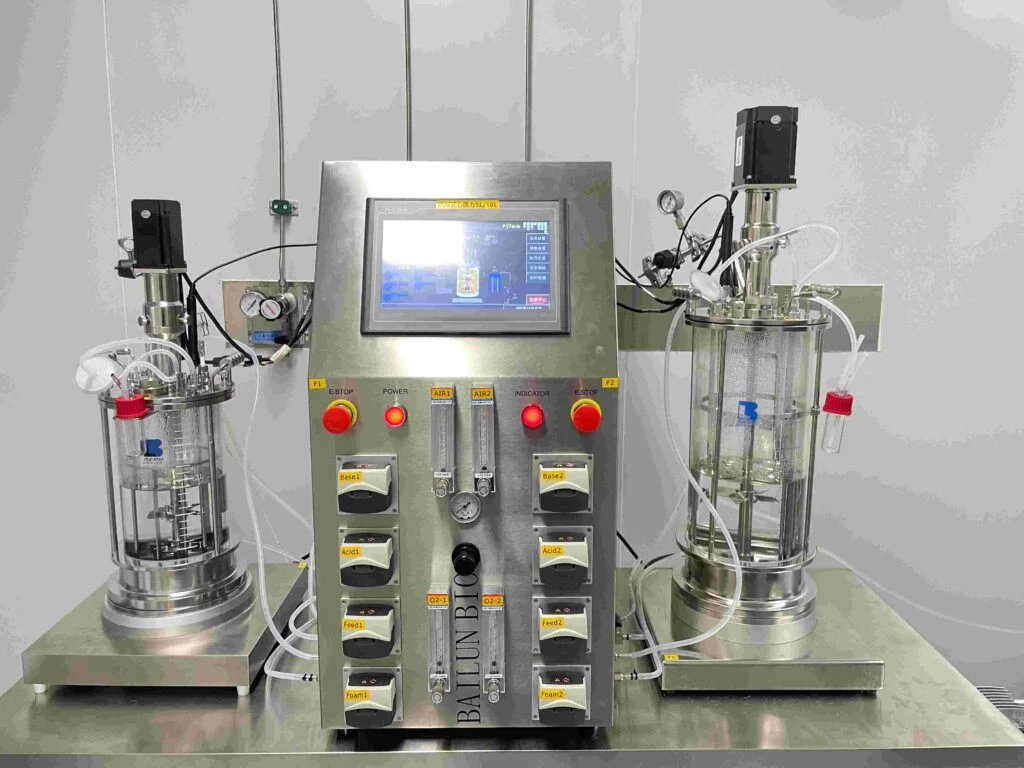
优点:
- 可见性:由于材料透明,观察内部生物过程非常简单。
- 多功能性:可适应不同的工艺,并提供机械驱动或磁力搅拌等多种配置。
- 无菌性:许多模型允许现场灭菌以防止污染。
缺点:
- 规模:不适合大规模工业生产,仅限于小型企业。
- 易碎性:与不锈钢等材料相比,玻璃更易碎。
2. 不锈钢生物反应器
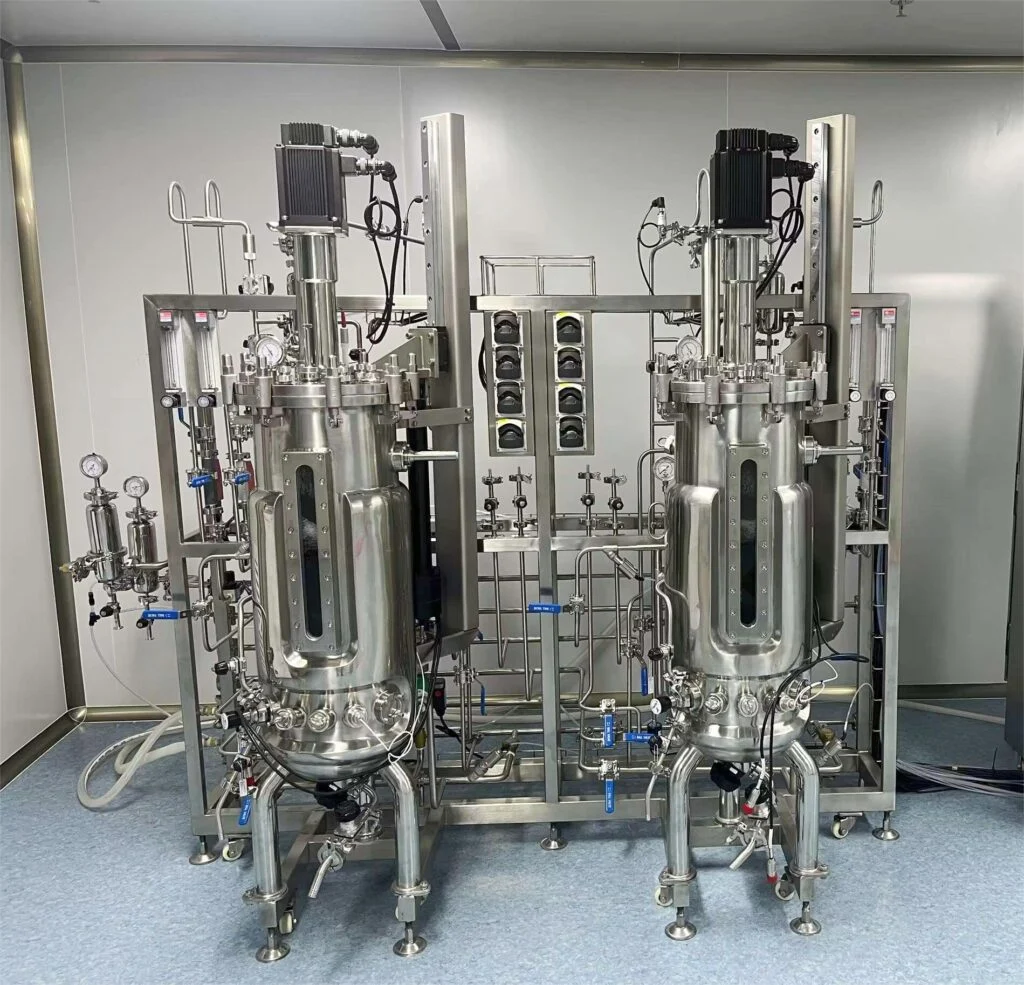
由于其坚固性和耐高压能力, 不锈钢生物反应器 在大规模工业生产中经常使用。
优点:
- 耐用性:不锈钢制成的生物反应器足够坚固,可以承受长期使用和高压程序。
- 可扩展性:适合大规模生产;常用于发酵和制药。
- 清洁度:保持工业环境中的无菌性需要轻松清洁和消毒不锈钢。
缺点:
- 成本:与较小或一次性生物反应器相比,它的建造和安装成本更高。
- 复杂的维护:这可能需要更长的时间才能完成,因为它需要更严格的清洁和验证程序。
3.搅拌罐生物反应器(STR)
它们是最著名的,许多人都喜欢它们。它们有一个圆柱形罐子,中间有一个叶轮或搅拌装置。叶轮不断搅动里面的液体,确保生物、气体和营养物质均匀分布。
优点:
- 非常适合工业生产。
- 出色的营养物质混合和氧气运输。
- 可轻松从小规模研究项目扩展到大规模制造业务。
缺点:
- 对于哺乳动物细胞等精细生物体,机械搅拌可以产生剪切应力。
- 由于采用机械搅拌机制,能耗较高。
4. 气升式生物反应器
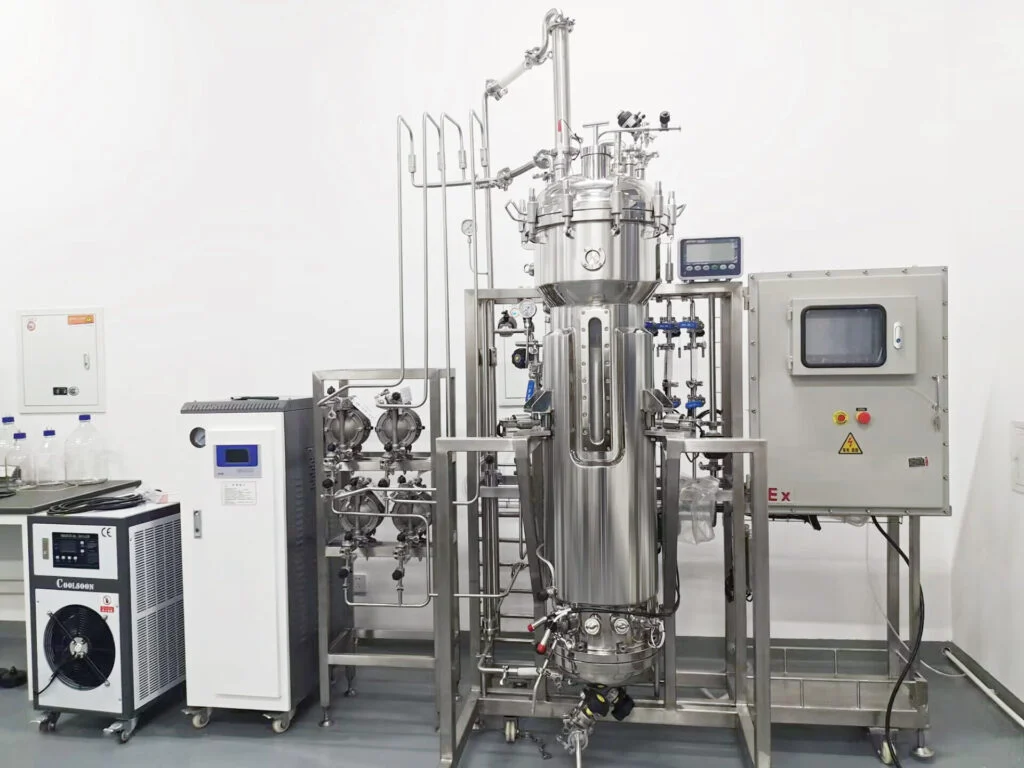
In lieu of mechanical agitation, airlift bioreactors mix using air or gas bubbles. A circulation loop is created in the liquid medium by introducing gas at the reactor’s bottom. The contents mix due to the velocity of the bubbles, which releases oxygen and encourages cell growth.
优点:
- 降低剪切应力,适合敏感细胞。
- 与机械搅拌系统相比,它更节能。
缺点:
- 与带有搅拌槽的生物反应器相比,混合效率降低。
- 扩大规模以用于制造业更具挑战性。
气升式生物反应器 在涉及敏感生物的操作以及植物和动物细胞的培养中经常发挥作用。
5.膜生物反应器
膜生物反应器使用半透膜将生物细胞和它们产生的产物分开。这种结构在需要持续分离的程序中被证明特别有利,例如废水处理,当清水流过膜时,生物质被保留下来。
优点:
- 细胞与效果良好的产品分离。
- 在正在进行的运营中表现出卓越的产出和效率。
缺点:
- It’s necessary to clean or replace membranes on a regular basis when they get fouled.
- 与架构更简单的生物反应器设计相比,它的运行成本更高。
5 生物反应器的应用
Now that we’ve looked at what is a bioreactor and how it functions, it’s time to go through its wide range of applications. Bio reactors are at the core of several industries undergoing radical change, from improving sustainable energy solutions to altering the production of pharmaceuticals.
生物反应器通过生产可以拯救生命的药物、利用生物能源以及推进生态负责的废物管理,对未来产生了重大影响。
1. 药品和疫苗生产
One of the biggest markets for fermenter is the pharmaceutical sector. Gene-modified cells cultivated in bio reactors are used in the production of many life-saving medications, including insulin, monoclonal antibodies, and vaccinations.
To cultivate the required cells on a large scale, for instance, fermenter technology was very crucial to the development and mass production of COVID-19 vaccines. Cultures of microorganisms or genetically modified mammalian cells that yield particular proteins, enzymes, or other medicinal chemicals can be grown in bio reactors.
通过传统化学程序通常不可能大规模生产的复杂生物药物现在因此而有可能生产。
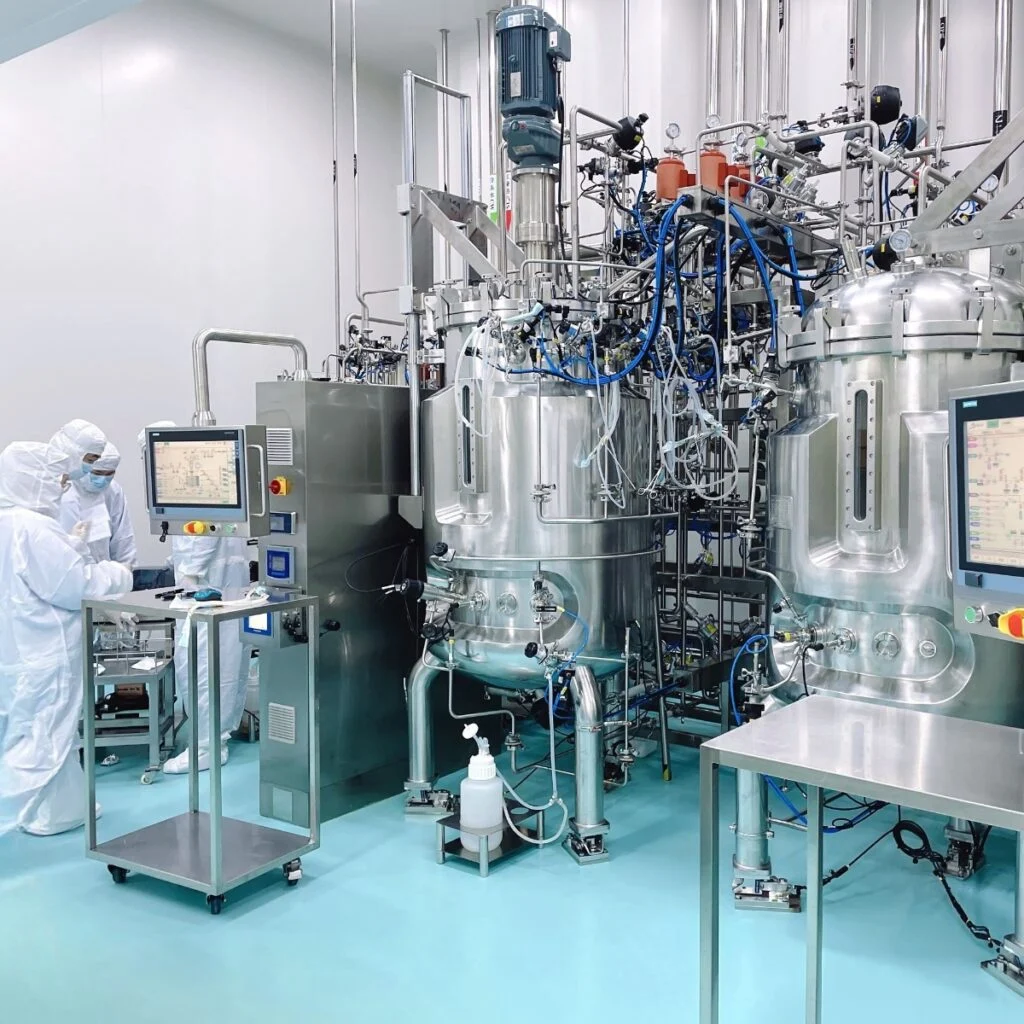
2. 生物燃料
As the world moves toward more sustainable energy sources, bio reactors are becoming increasingly important in the production of biofuels. Microorganisms such as algae, yeast, or bacteria can be grown in bioreactors, where they convert organic material into biofuels like ethanol, biodiesel, or even hydrogen.
Biofuels produced in fermenter offer a renewable alternative to fossil fuels and can significantly reduce greenhouse gas emissions. Algae, for example, can be cultivated in photobioreactors, where they photosynthesize and produce lipids, which can then be converted into biodiesel. These processes are seen as critical to the transition to a cleaner energy in future.
3. 食品和饮料
工业发酵, the process by which microorganisms break down sugars to generate goods like beer, wine, yogurt, and bread, has long been a food and beverage industry’s staple. This age-old method has been elevated by fermenter, which provide exact control over fermentation conditions for consistently high-quality and flavor results.
For example, these fermentation bio reactors, sometimes called 工业发酵罐, are used in the brewing industry to efficiently convert sugars into alcohol by cultivating yeast in an ideal environment. Fermenter in dairy production allow milk to ferment on a massive scale to make fermented products like cheese and yogurt.

4.废水处理
Environmental engineering requires fermenter especially for cleaning up wastewater. For instance, membrane bio reactors are used to clean industrial and sewage waste by cultivating bacteria that decompose organic waste. Water treated like this is safe to reuse or discharge into the environment.
当这些系统中的微生物分解废水中的有机化合物并产生安全的副产品时,就可以实现这一点。这种方法以有效且环保的方式减少了危险化学品和能源密集型处理。
5. 组织工程与再生医学
生物反应器用于组织工程,在支架上培养细胞以形成组织或整个器官。这些生物反应器提供与人体相似的受控环境,使细胞能够增殖并转化为有价值的组织。
借助这项技术,受损的组织或器官有朝一日可能会被再生医学领域实验室培育的替代品所取代。例如,生物反应器已被用来生成肝组织、软骨和心脏瓣膜,给需要器官移植但长期等待的患者带来了希望。
利用专为满足当代生物技术需求而设计的技术来改善您的运营。立即升级,并通过与百伦生物科技合作来见证最先进创新的影响。
联系我们 现在就找到适合您特定需求的理想生物反应器解决方案!

